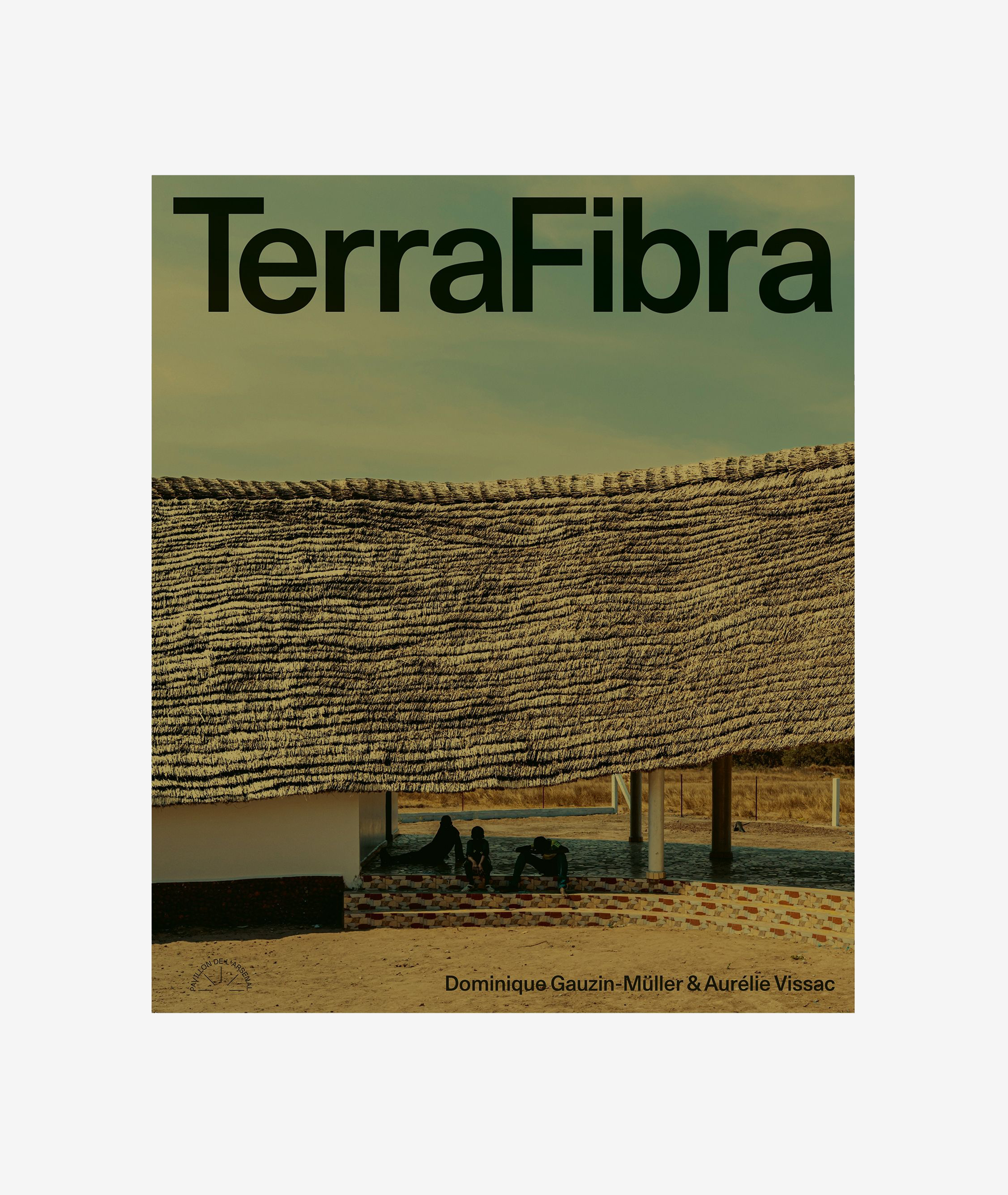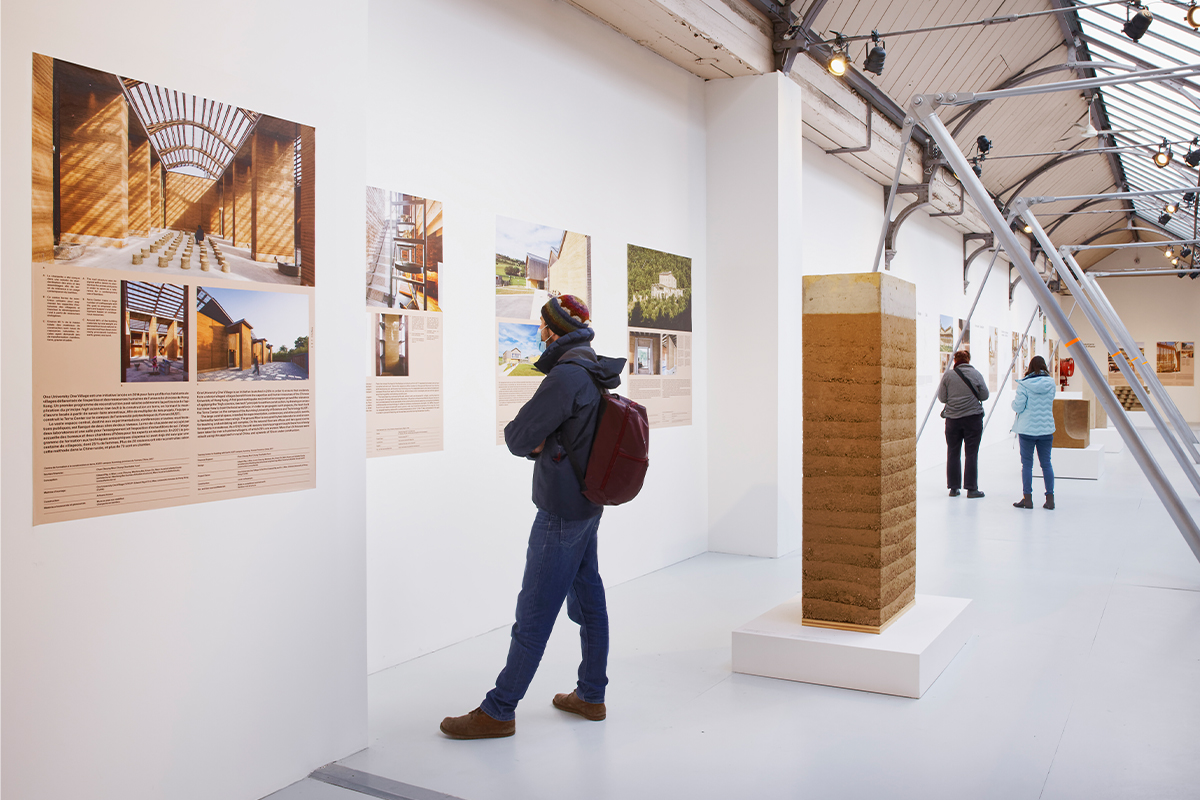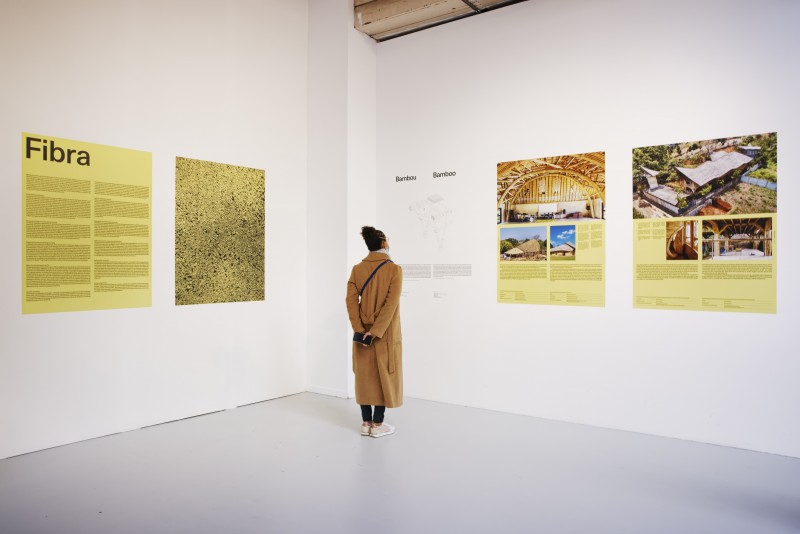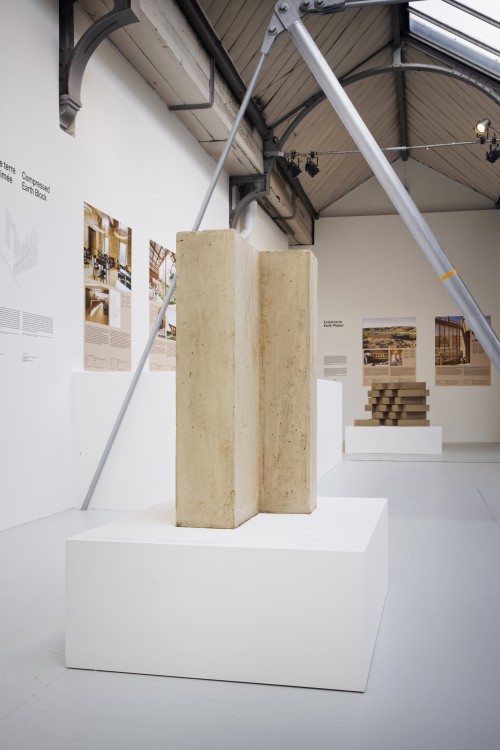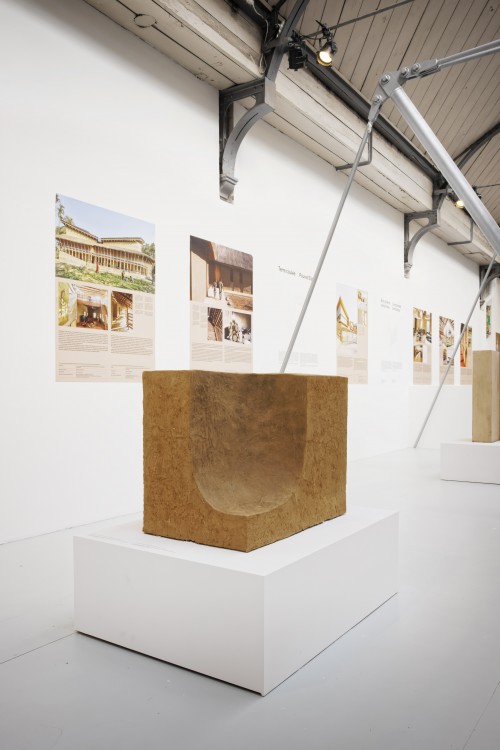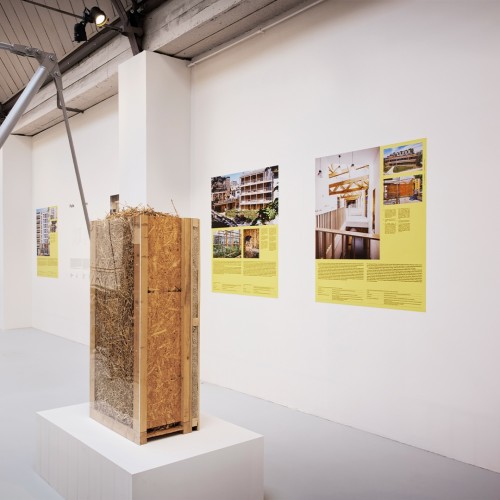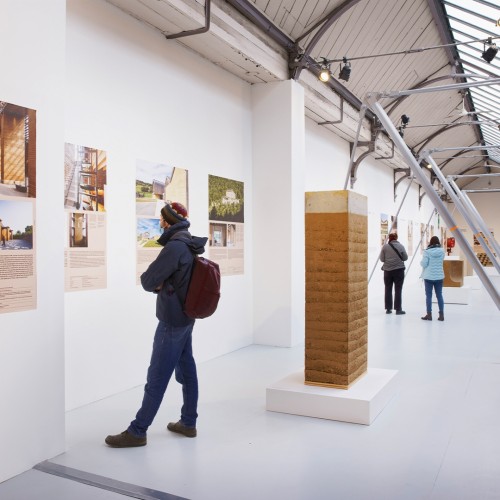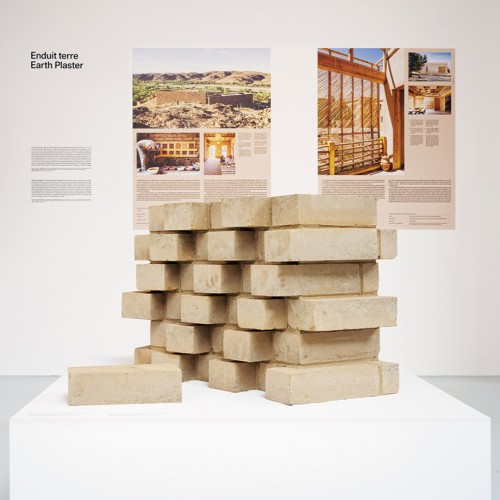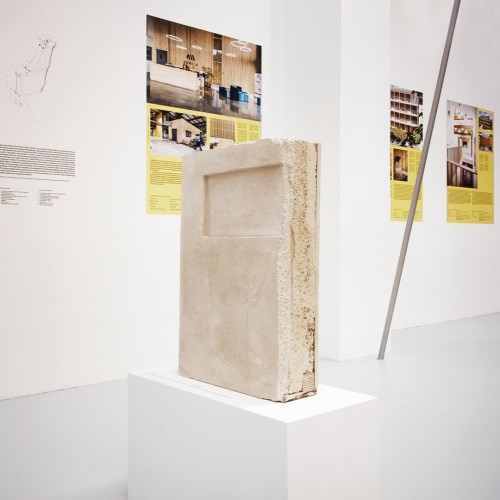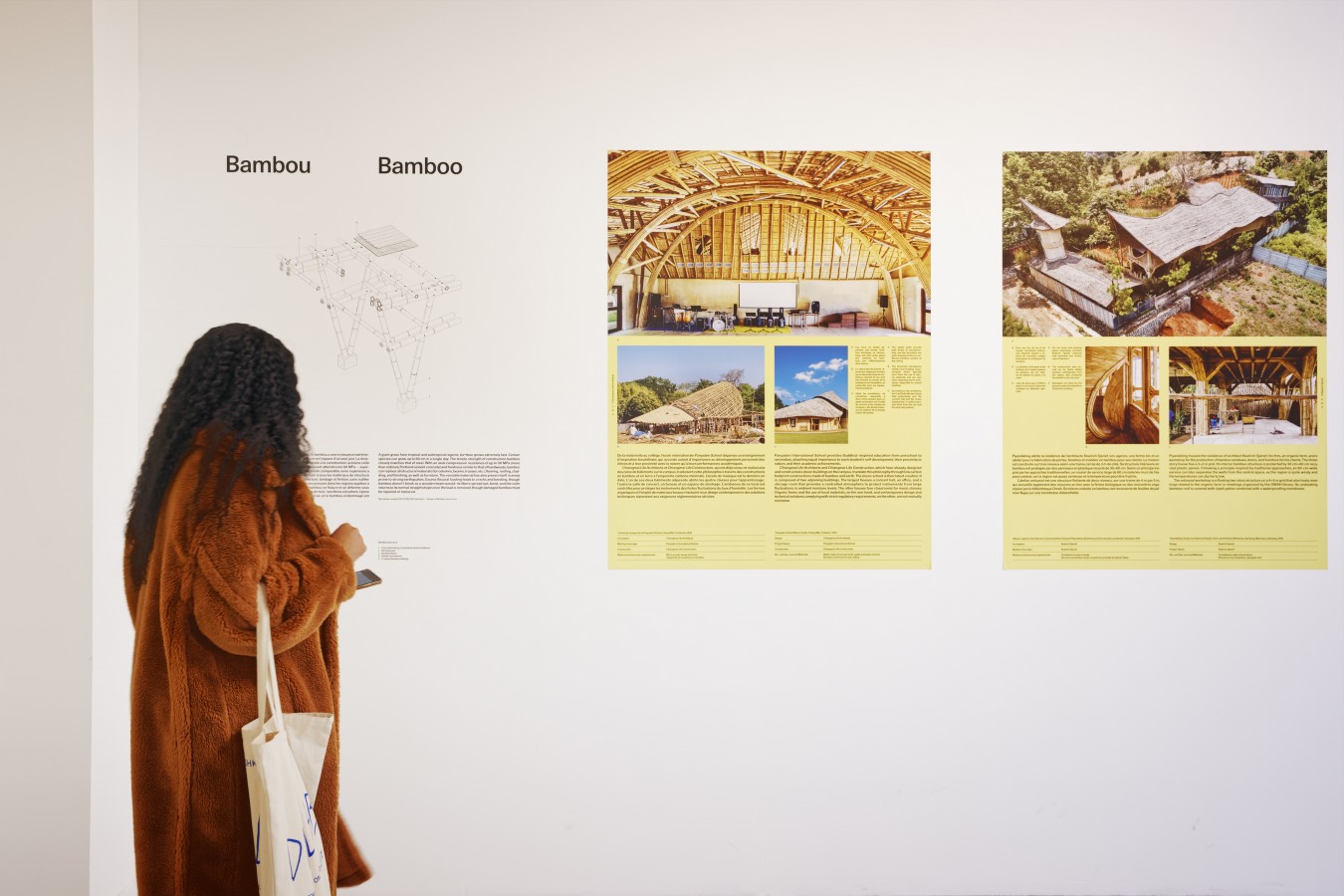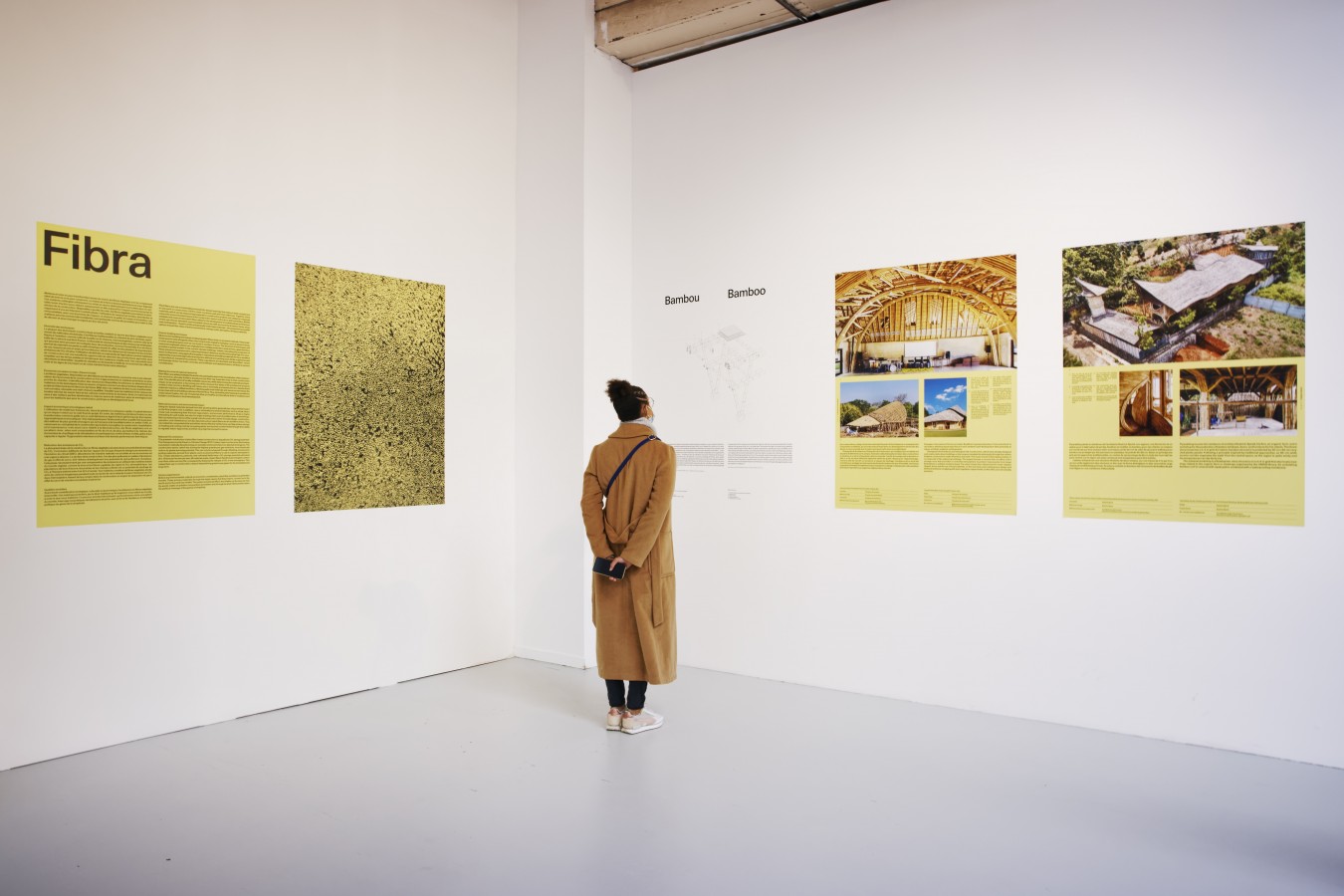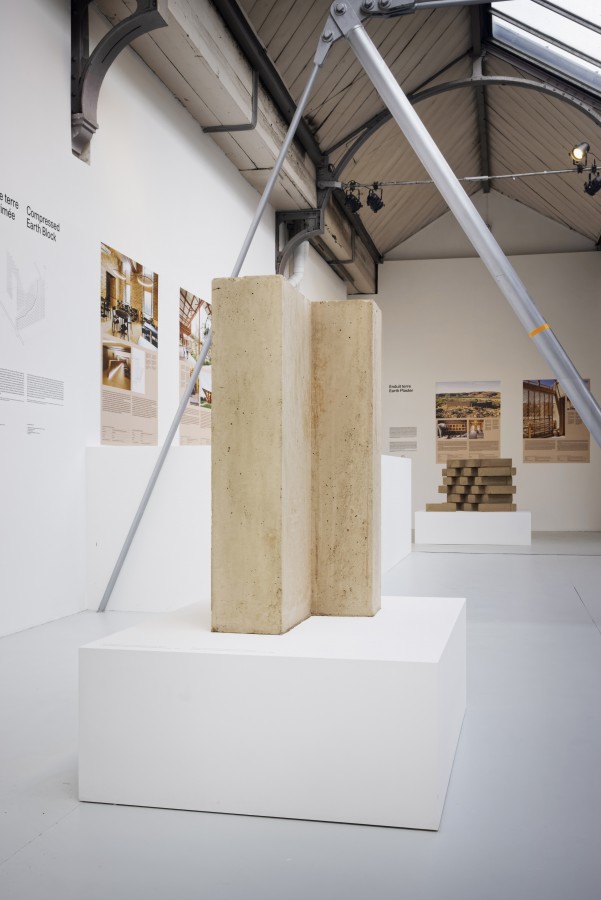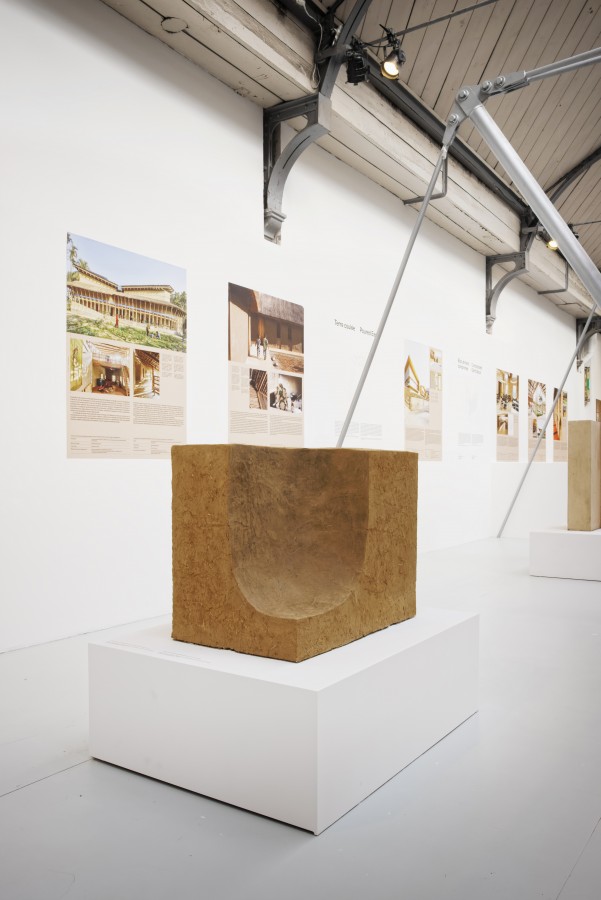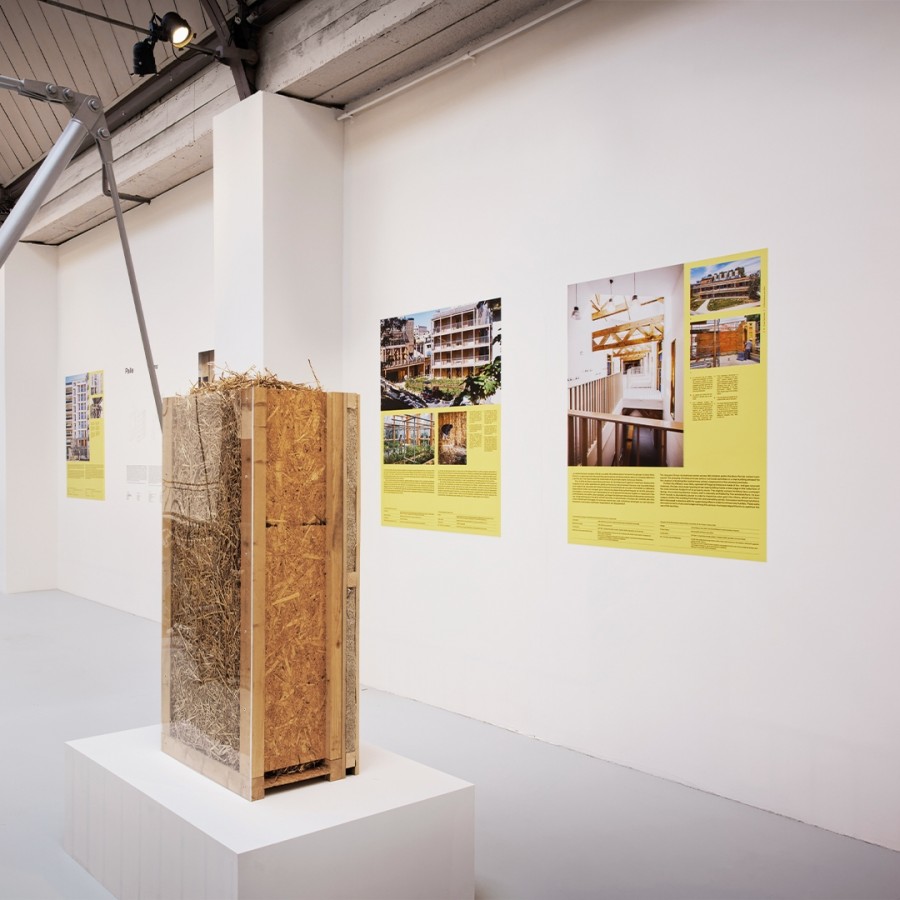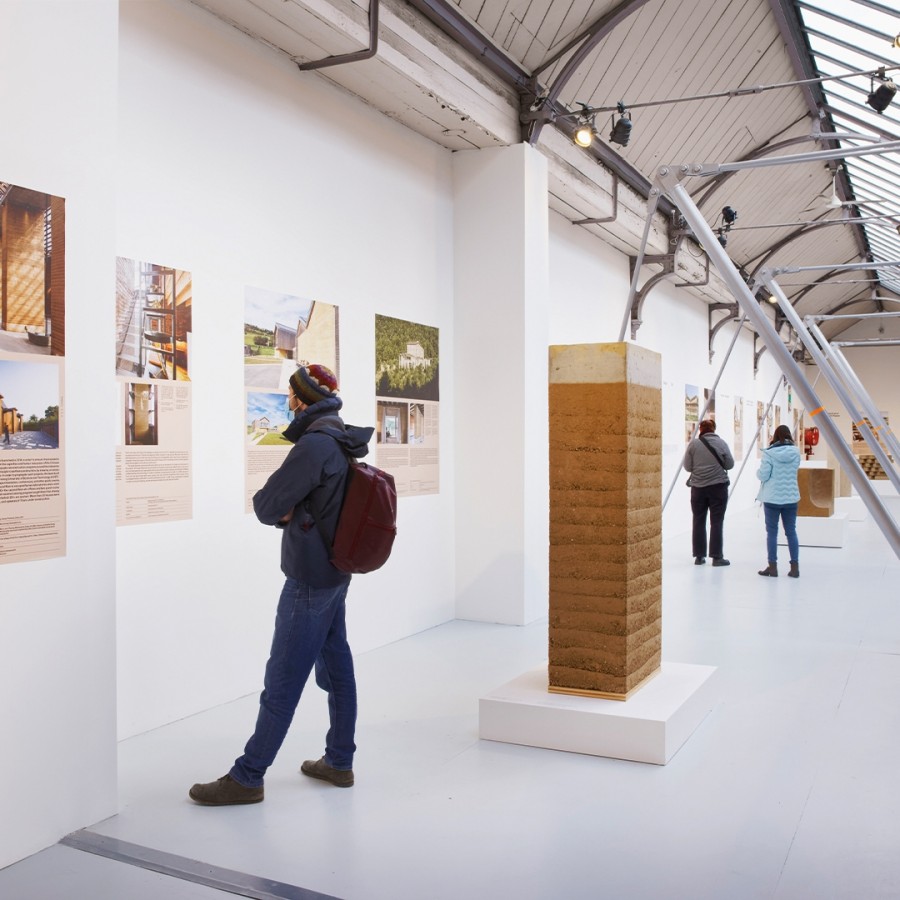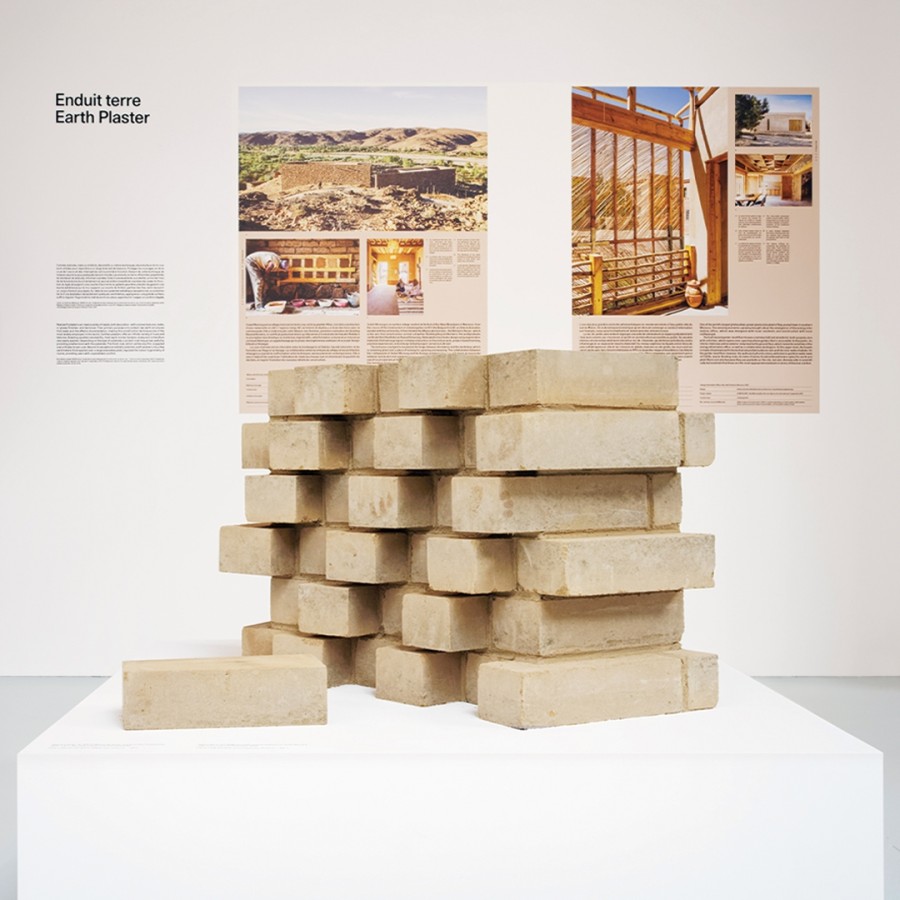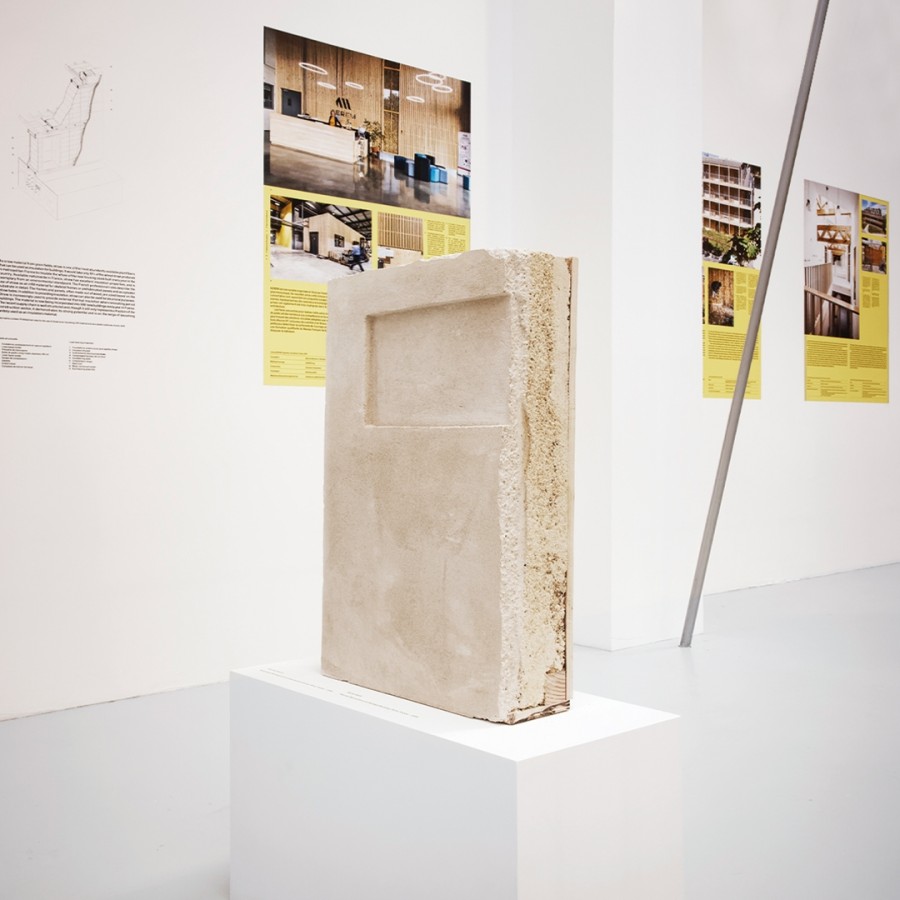Buildings built with rammed earth, poured earth, cob, adobe, wattle and daub, or compressed earth blocks, walls with straw bale insulation or lime-hemp, bamboo frame, reed roofing… TerraFibra Architectures reveals the 40 finalist buildings of the first global award in contemporary earthen and plant fiber-based architectures. Co-produced by Pavillon de l’Arsenal, amàco, and Les Grands Ateliers, the exhibition and the associated book present these international projects and explain, through a thematic itinerary, the qualities and benefits of these materials and their associated techniques, both ancient or innovative.
The exhibition is arranged based on the plant used for fibers (hemp, straw, reed, bamboo) and on the techniques employed for raw earth (rammed earth, poured earth, cob, adobe, compressed earth block, wattle and daub, and earth plaster). Photographs, full-scale prototypes, technical drawings, and samples allow visitors to physically touch these abundant materials, while admiring the creativity of the architectures on display.
The very first global award in contemporary earthen and plant fiber-based architectures, TERRAFIBRA Award 2021 brings together TERRA Award 2016, the global award in earthen architecture, set up by Dominique Gauzin-Müller and led by amàco and CRAterre, and the FIBRA Award 2019, the global award in plant fiber-based architecture run by amàco. More than 300 teams from 62 countries have answered this call for applications and align with the dynamics of the previous submissions, establishing a network of professionals exchanging views and supporting one another.
Following the COP26 Climate Change Conference, the TerraFibra Architectures event confrims that environmentally-friendly practices exist throughout the world, in highly diverse contexts. The actors involved in these projects are enthusiastic, passionate, and generous. They make the use of bio- and geo-sourced materials credible industry-wide and highlight the key economic, social, and environmental aspects of their projects and their commitments. They demonstrate that it is possible to construct buildings differently, drawing on local resources and know-how, without giving up innovation. Well-grounded in their territory, these frugal and creative architectures open up new horizons in construction and renovation.



